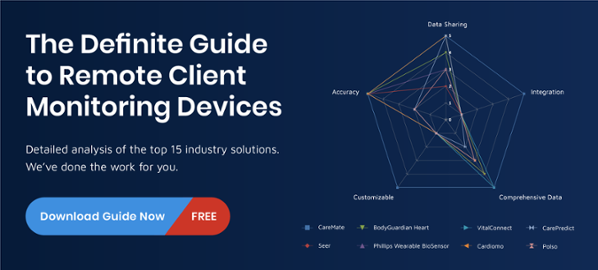Technology is enabling a dramatic change in healthcare, just as the pressures to decrease hospital...
Technology is enabling a dramatic change in healthcare, just as the pressures to decrease hospital time and limit personal interactions are peaking. This collision of need and possibility is birthing a new approach to healthcare – one that relies on technology to collect, disperse, and even analyze patient health data.
Telemedicine is emerging as the new way forward for patients seeking care and limiting in-person interactions while managing rising healthcare costs. Most insurance providers allow no-cost telemedicine visits, while in-person visits still carry a co-pay and possibly a deductible. When coupled with convenience and availability, telemedicine is an ever-growing and popular form of healthcare.
For medical providers, telemedicine provides an opportunity to treat patients that a provider might not otherwise see. This expands the possibilities for early identification of chronic disease and the chance to decrease sick time related to common illnesses. Telemedicine also providers doctors with a new way to work. Traditionally, doctors have worked long hours and were tied to an office or hospital as the only means of seeing patients.
Now, doctors can enjoy the same flexibility and freedom as many other professions have found through remote work. Of course, not every doctor will choose to work this way, and there is still a tremendous need for in-person care. However, through telemedicine, dispersing the workload and moving some patient visits out of the office frees up time and space for those who need it most.
Managing Health Data on the Go
According to HealthIT.gov, there are three primary versions of virtual health records:
-
Electronic Medical Records (EMR)
-
Electronic Health Records (EHR)
-
Personal Health Records (PHR)
Electronic medical records are the digital version of a paper patient file. Many doctor's offices have switched over to EMR because they allow clinicians to view a patient's progress over time, identify patients due for screenings, and monitor patients more effectively.
Electronic health records are very similar to EMR, except that they contain information from all of the health care providers involved in the patient's care and, everyone who is authorized can access that information. The great thing about EHR is that they follow patients, from hospital admissions to specialists, primary care doctors, and even urgent care visits – the patient's complete health history is available.
Personal health records are very similar to EHR in that they contain diagnoses, medications, immunizations, family medical history, and a list of providers. The primary difference is that a PHR is established and maintained by the patient. The data in a PHR comes from doctors, lab results, remote monitoring devices, and even the patients themselves.
As the ways in which patients interact with doctors become more diverse, the importance of maintaining a secure, comprehensive health record increases. Doctors, support staff, and patients each have a role in ensuring that health records are accurate and available.
Remote monitoring devices improve the quality of diagnostic data used in telemedicine and make valuable contributions to health records.
Technology That Improves the Affectivity of Telemedicine
In most cases, telemedicine visits occur with little diagnostic data. Patients describe symptoms to doctors over a call or video chat, and the provider determines care. However, new devices are emerging that allow providers to obtain real-time access to a patient's vital statistics.
Medical-grade remote monitoring devices can deliver information on heart functioning, respiration, activity levels, sleep patterns, blood pressure, body temperature, and even glucose levels securely via HIPAA-compliant, secure connections.
This information gives the provider insight into the patient's overall wellbeing and, when added to an EHR or PHR, can help future providers better understand the patient's history and improve the quality of future diagnoses.
Remote patient monitoring is a vital aspect of the changing landscape of health care. Medical grade devices provide valuable insight into the patient's health and give patients and doctors peace of mind by enabling continuous monitoring.
As the healthcare landscape continues to change, remote monitoring and accessible virtual health records are likely to play a significant role in improving the quality of patient care and supporting telemedicine.

